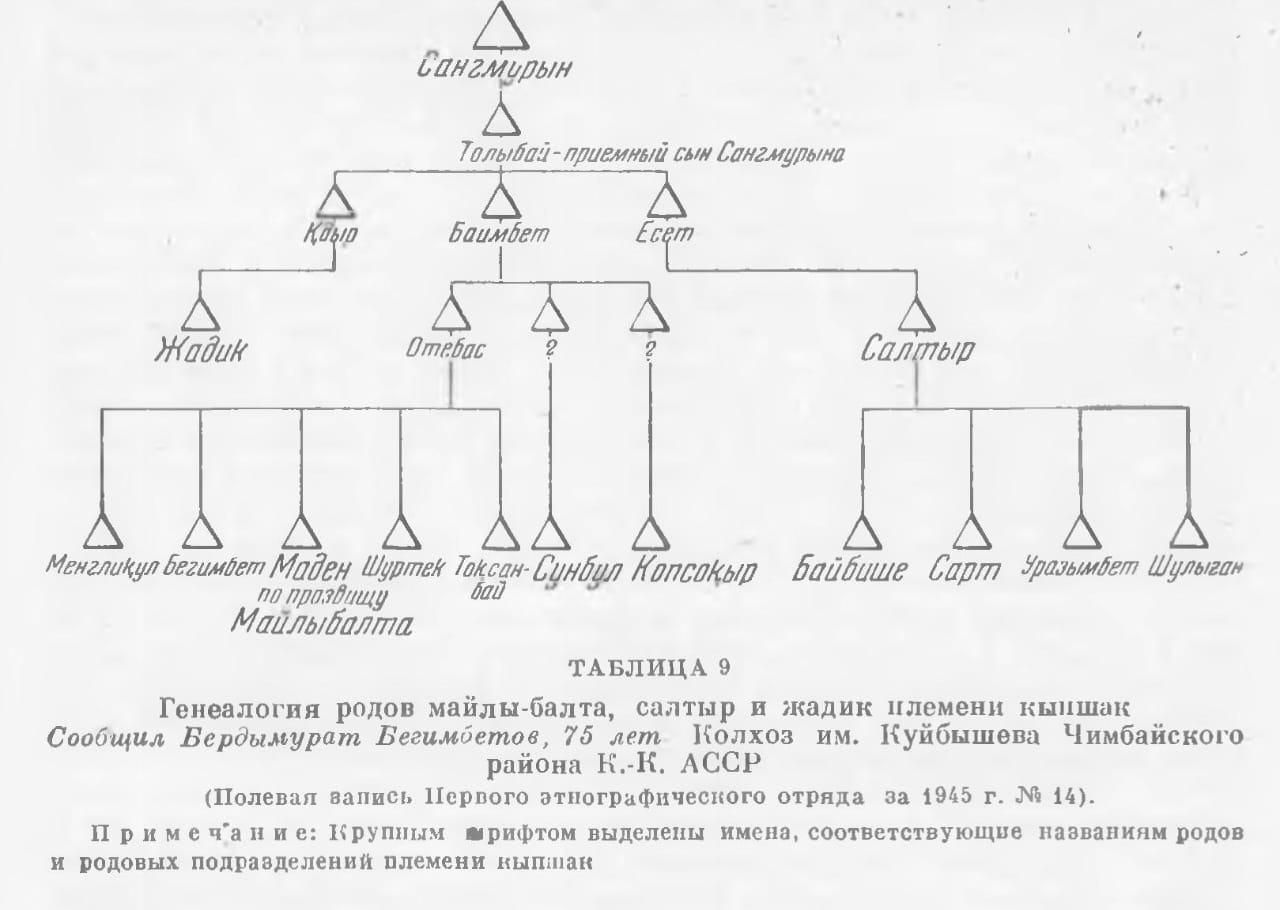The Role of Kipchaks in the Formation of the Karakalpak People: Settlement and Ethnic Characteristics of Kipchak Tribes
Research Article
Keywords:
The Aral Sea region, Middle Ages, Kipchaks, Karakalpaks, tribal groups, ethnic composition, language, folklore, settlement patternsAbstract
The role of the Kipchaks in the formation of the Karakalpak people has been analyzed, with special attention given to their ethnocultural characteristics within the Karakalpak composition and the territory of their settlement in the Southern Aral Sea region. The Kipchaks played a crucial role in the ethnic and cultural history of the Karakalpaks. Indeed, the Kipchaks left a significant imprint on the ethnic and cultural heritage of the Karakalpak people. Their influence was evident in various aspects, ranging from shaping the ethnic composition to impacting cultural traditions and economic practices. The settlement of the Kipchak tribes in the Southern Aral Sea region marked a crucial stage that influenced the formation of the Karakalpak people as an ethnic group. The Kipchak and Nogai elements in Karakalpak folklore are evident in storylines, characters, and motifs that reflect the traditions, values, and historical events of these peoples. This influence also emphasizes the close ties and interactions between these groups, which, in turn, enriched the cultural heritage of the Karakalpaks. One of the key indicators characterizing the level of Kipchakization is the inclusion of a particular people's languages in the Kipchak group of Turkic languages. As is known, the fourth period in the development of Turkic languages - the Middle Turkic period (10th-15th centuries) - is notable because it is precisely during this time that the foundation of all modern Turkic languages was formed. The degree of participation of Turkic-speaking ethnic components, tribal groups, clans, and tribal unions in the formation of the Karakalpak ethnos varied. Among the largest ethnic components, one can distinguish the Pechenegs, Oghuz, Kipchaks, Kangly, Kungrats, Mangyts, as well as numerous tribal groups integrated into the clan structure of the Karakalpaks. During the Golden Horde period, intercultural interaction between two distinct socio-cultural groups - settled and nomadic peoples - took place in the territories of the Syr Darya and Aral steppes. This interaction contributed to changes in the ethnic composition of the local population, the transformation of language, as well as the development and modification of the material culture of the peoples of the Aral Sea region.
Downloads
References
Abdumanapov R. Kipchaki v jetnogeneze kyrgyzov. Bishkek: 2015 200 p. (in Russian)
Akhinzhanov S. Kypchaki v istorii srednevekovogo Kazahstana. Almaty: Gylym. 1995. 296 p. (in Russian)
Porphyrogenitus K. Ob upravlenii imperiei. Moscow: Nauka Publishing House. 1991. (in Russian)
Zhdanko T. Ocherki istoricheskoj jetnografii karakalpakov. Rodoplemennaja struktura i rasselenie v XIX – nachale XX veka. USSR Academy of Sciences. Moscow ‒ Leningrad: USSR Academy OF Sciences. 1950. 178 p. (in Russian)
Zhirmunsky V. Narodnyj geroicheskij jepos. Sravnitel'no-istoricheskie ocherki. Moscow ‒ Leningrad: USSR Academy OF Sciences. 1962. 437 p. (in Russian)
Zadykhina K. Uzbeki delty Amudari. TKhAEE. Arkheologicheskie i etnograficheskie raboty Khorezmskoi ekspeditsii 1945-1948 gg. Moscow: USSR Academy OF Sciences. 1952. (in Russian)
Ivanov P.P. Ocherk istorii karakalpakov. Materials on the history of the Karakalpaks. Collection of the Institute of Oriental Studies. Vol.VII. Moscow ‒ Leningrad. 1935. (in Russian)
Kamalov S. Qaraqalpaqlardıń xalıq bolıp qáliplesiwi hám onıń mámleketliginiń tariyxınan. Nukus. 2001. (in Uzbek)
Kayumov A. Jetnicheskaja situacija na territorii juzhnogo Uzbekistana v ХIХ – nachale ХХ veka (po materialam Surhan-Sherabadskoj doliny). Abstract of the dissertation for the degree of Candidate of Historical Sciences. Tashkent. 2011. (in Russian)
Klyashtorny S. Istorija Central'noj Azii i pamjatniki runicheskogo pis'ma. St. Petersburg. St. Petersburg. 2003. 560 р. (in Russian)
Kumekov B., Kuzembayev N. Kipchakskij faktor v Zolotoj Orde. Journal of History. 2022. No.3(106), рр.41‒53. (in Russian)
Kydyrniyazov M.-Sh. Material'naja kul'tura gorodov Horezma v XIII-XIV vv. Nukus: Karakalpakstan. 1989. 176 p. (in Russian)
Pilipchuk Ya., Sabitov Zh. Ocherki jetnopoliticheskoj istorii kypchakov. Astana: «Gylym» Publishing House. 2015. 248 p. (in Russian)
Rasovsky D. Polovcy. Chernye klobuki: pechenegi, torki i berendei na Rusi i v Vengrii. (Raboty raznyh let). Moscow: TSIVOV. 2012. 237 р. (in Russian)
Sumo P. Istoricheskie rassuzhdeniia o proiskhozhdenii narodov, naseliavshikh v srednie veka Polshu, Rossiiu i zemli mezhdu Kaspiiskim i Chernym morem, takzhe Evropeiskuiu Turtsiiu na severe ot Dunaia. Moscow: at the University. Printing houses. 1846. (in Russian)
Tolstov S. Gorod guzov (Istoriko-jetnograficheskie jetjudy). Soviet Ethnography. 1947. No.3, pp.55‒103. (in Russian)
Tolstov S. K voprosu o proishozhdenii karakalpakskogo naroda. Kratkie soobshhenija IJe im. N. Mikluho-Maklaja. Issue. II. Moscow ‒ Leningrad. 1947. Рp.69‒75. (in Russian)
Tolstova L. Karakalpaki Buharskoj oblasti Uzbekskoj ASSR (p materialam polevyh issledovanij 1960 g.). Soviet Ethnography. 1961. No.5, рр.69‒75. (in Russian)
Tolstova L. Materialy jetnograficheskogo obsledovanija gruppy «karakalpak» Samarkandskoj oblasti Uzbekskoj ASSR. Soviet Ethnography. 1961. No.3, рр. 34-44. (in Russian)
Feodorov-Davydov G.A. Kochevniki vostochnoj Evropy pod vlast'ju zoloto-ordynskih hanov. Arheologicheskie pamjatniki. Moscow: Publ. Moscow University. 1966. 276 p. (in Russian)
Hamidov H. Qaraqalpaq tili tariyxınıń ocherkleri. Nukus: Karakalpakstan. 1974. 360 p. (in Karakalpak)
Shaniyazov K. K jetnicheskoj istorii uzbekskogo naroda (istoriko-jetnograficheskie issledovanija na materialah kipchakskogo komponenta). Tashkent: «FAN». 1974. 206 р. (in Russian)
Shcherbak A. Pechenezhskii iazyk // Iazyki mira / Tiurkskie iazyki. Pod redaktsiei Tenisheva E. Bishkek: "Kyrgyzstan". 1997. Рp. 107-110. (in Russian)
Yagodin V.N. Strelovidnye planirovki Ustjurta (Opyt istoriko-kul'turnoj interpretacii). Tashkent: FAN. 1991. 206 р. (in Russian)

Downloads
Published
Issue
Section
License
Copyright (c) 2025 M. Davletyarov

This work is licensed under a Creative Commons Attribution-NonCommercial-NoDerivatives 4.0 International License.


